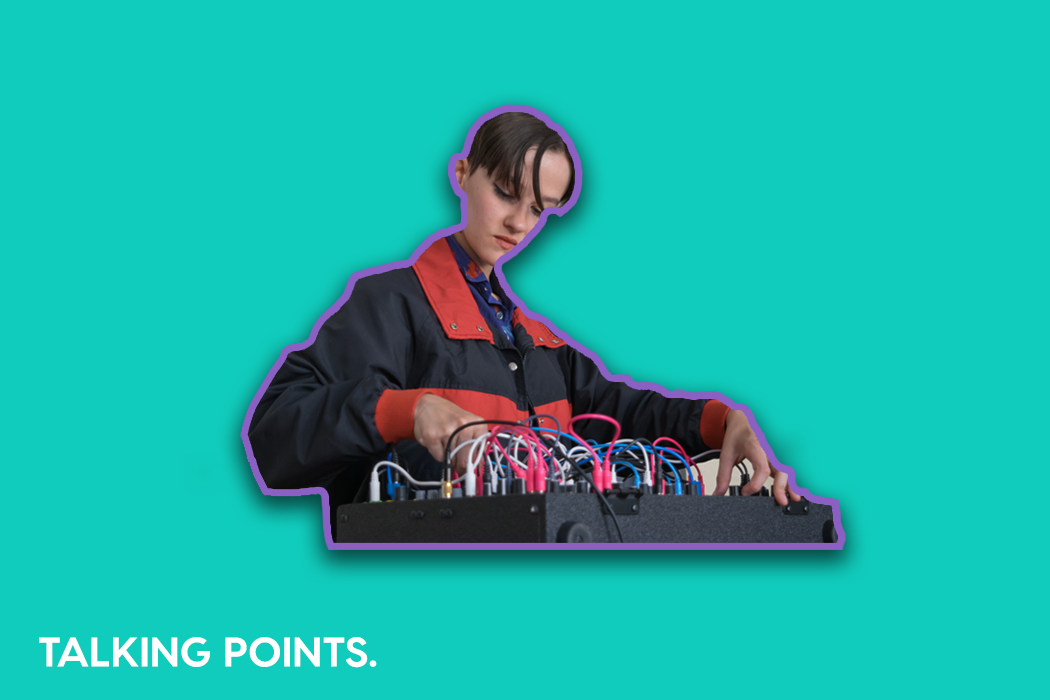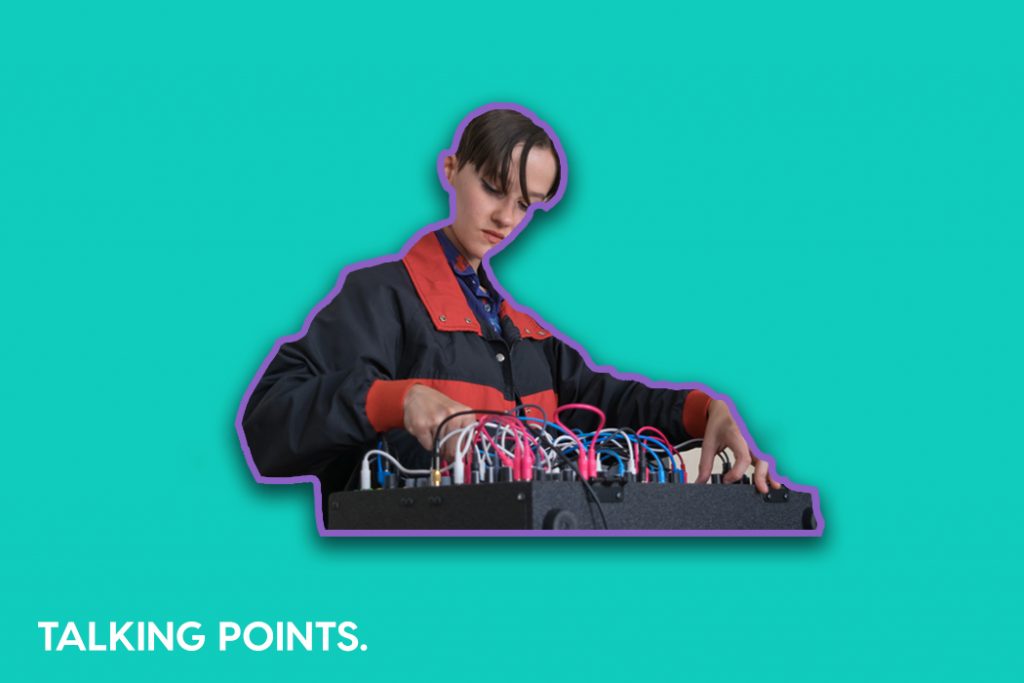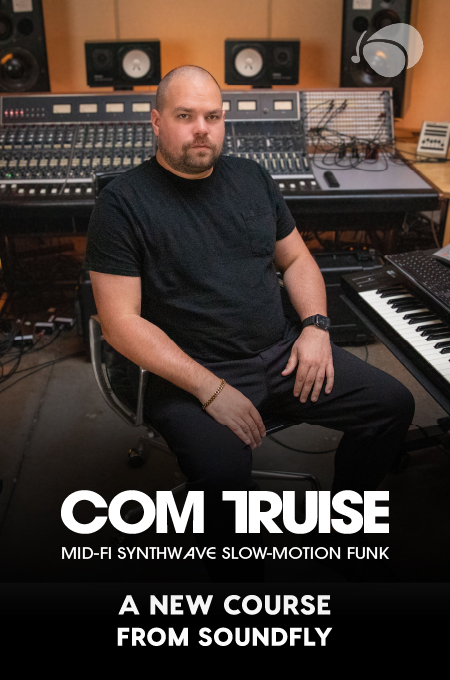
Welcome to our brand new column, Talking Points, where we revisit a lengthy lecture or Q&A with the greatest minds in music production and composition, and elucidate the most interesting details or concepts mentioned by each guest in order to gain a fresh perspective on the topic in question. In other words, we’ll pull out the talking points. Follow along with the series here, or sign up for our newsletter to get more music learning like this in your inbox every Tuesday!
Since last week’s Ableton Loop conference in Los Angeles is still fresh on our minds, we decided to revisit a conversation and performance held at the 2017 Loop conference between Berlin-based synthesist and electronic composer Caterina Barbieri and Ableton’s own Dennis DeSantis. Barbieri broke out onto the international electronic music scene with her spectacular 2017 release, Patterns of Consciousness; but her brand new record, Born Again in the Voltage, takes her approach even further and offers something truly rewarding to listeners willing to let their mind stretch out and bathe in some seriously fluid sonics.
In the interview below, there’s a fair amount of synthesis speak, so if you’re interested in brushing up on your synth knowledge, check out Soundfly’s in-depth online course, Advanced Synths and Patch Design for Producers, to learn pretty much everything you need to know as a beginner in electronic music.
Caterina gives some interesting insight into how she approaches composition, and we can glean a fair amount of helpful advice from this, so skip the lengthy video and join me below for the talking points!
1. “Minimalism is music as a process.”
DeSantis starts this conversation asking Barbieri about her relationship to the word minimalism. She responds first with a simple definition of the concept of minimalism in music as she understands and makes use of it, which is something along the lines of:
“Minimalism is mostly the exploration of repetition… [and] based on the heavy use of repetitions, permutations, and variations of a single, small music unit. So there’s a strong focus on the smaller parts of the musical discourse and their organic development.”
Essentially what Barbieri is saying here is that she enjoys minimalism’s focus on small musical groupings and ideas, and in her practice she likes to use these motifs to eke out a pathway for her piece, or pieces, to develop along. It’s a time-based approach to composition that leaves the door open for uncertainty and non-linearity. And that’s how she arrives at her declaration that for her, “minimalism is music as a process.”
She works with a modular rack, primarily, but when working in a DAW like Ableton Live to create electronic music, it’s so easy to fall into the trap of cutting-and-pasting, looping and building, and over-polishing… and resisting change. For Barbieri, she uses this methodology and style of composition as a way of exploring change in a way that feels organic and nature-inspired, despite being purely electronically generated. It’s really evocative and compelling to think about we you can infuse our writing process with a conceptual frame of mind that helps to keep ideas from stagnating.
2. “I change as the sound changes.”
Barbieri describes her work, Patterns of Consciousness, as a single variation of pitches explored in almost one hundred different ways. She talks about how it starts with a very closed system of musical relationships and rules for how the set functions, and then opens up into a blooming and flowing cascade of musical operations that take it greater distances. What she’s exploring in this hyper-minimalist approach is how we perceive sounds, sonic information, and sonic change — or, psychoacoustics. And takes it a step further, saying, “I change as the sound changes.”
Through modular synthesis, although not limited to it, an artist is able to let sounds generate their own paths through filters and envelopes, etc., and be passed over by numerous time-based effects that mimic a sort of living organism. It’s not always certain what the end result will sound like once these processes begin. The artist can then be considered an agent of generative will, as well as a passive listener — similar to how in jazz improvisation, and almost all forms of live collaboration, we hear and play and react to the combination of our own sounds amongst those of other musicians in the same moment. For Barbieri, that relationship is between her and the machine in real time. She grows as the music grows.
3. Make music as fluid and continuous, rather than binary.
In a lengthy explanation of the fundamental differences between western and non-western musical forms, particularly Indian classical music, Barbieri arrives at a declaration that Western music operates in a binary manner. In other words, we in the West envision sound as being generated from silence, so the compositional direction to pluck a note from a string is like switching sound “on” from “off.”
She sort of calls for a resistance to that mindset when composing, leaning towards the Indian idea of the cosmic vibrations from which music is subtracted. Music in the East is often considered more cyclical in nature, and continuous, as it tends to be accompanied by tonal drones or rhythmic repetitions, which are seen to branch off into the musical forms (melodies, harmonies, counterpoint) that sit underneath them. Sound is, thus, not built from silence, but coerced from a continuous Earth tone that permeates everything.
4. Generate illusions of polyphony.
In a very brief, passing point, Barbieri mentions that she uses harmonics (because her main oscillator is monophonic and cannot produce chord shapes) to create “the illusion of polyphony.” I just think that’s a really interesting statement that begs to be considered.
In the work of composers like LaMonte Young, Charlemagne Palestine, and Eliane Radigue just to name a few, the presence of harmonics as a musical element is a central component. Harmonics are so dependent on air and spatial conditions that they will change shape in every single different room a piece is performed in, and they’ll usually manifest differently throughout a performance, as well, so they’re a powerful reflection of a sound’s identity in any given moment and evidence of sound’s flexibility at the whims of nature. This is a great example of how musicians can use constraints in order to think creatively and outside the box, often maximizing the distances that a limited setup will take them.
To learn more about how harmonics work, check out this amazing article by Soundfly Mentor and Flypaper author, Martin Fowler.
5. Always make sure your conceptual framework comes through in the listening experience.
“Experimental” only really means that an artist is using what they perceive to be the rules and limitations of musical practice as malleable areas of exploration, deconstruction, and play. In light of this, some of the best boundary-pushing music out there will tie in concepts from other disciplines of art and thought, elevating the music to truly creative heights.
However, while conceptual music is exciting in nature, it’s only as good as its implementation and its ability to communicate the concept to the audience. So go ahead and experiment with theoretical frameworks, just don’t lose sight of what the music is doing to serve them.
Continue learning about synthesis and patch design with Soundfly’s exciting new course, Advanced Synths and Patch Design for Producers. Preview the course for free, and subscribe for access here.




